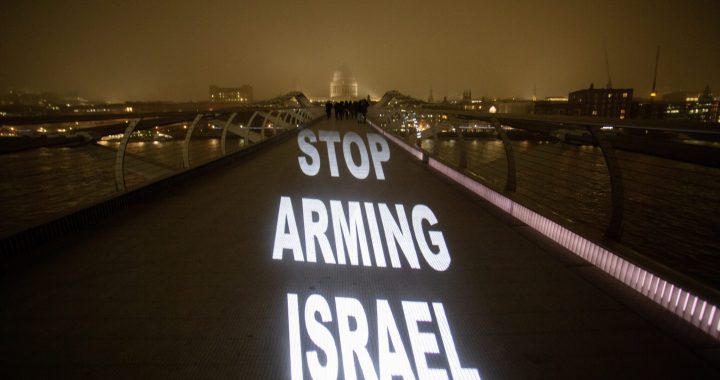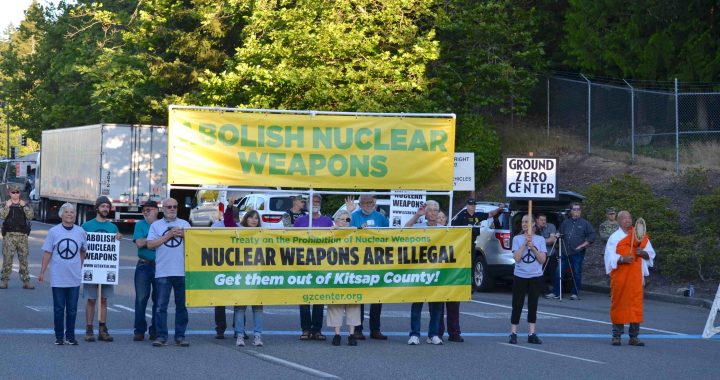By Leonard Eiger
Theses are dark days for the Republic and for the world, and not just because we have an out of control president who believes he can do whatever he chooses and is accountable to no one, but because that same president has a new nuclear weapon at his disposal, and it is a nuclear weapon that he just might use one day. Here’s the story.
In a gift to the Grinch, the 2020 National Defense Authorization Act (NDAA) went from being opposed by every House Republican in July (2019) to being overwhelming approved by both Republicans and Democrats in December (by a vote of 477 to 36). In the end the Democrats gave up everything of substance that they had fought for.
Responding to criticism from progressives about the Democrats’ failure to find their backbone, and in a brilliant outburst of doublespeak, House Armed Services Committee Chairman Adam Smith (D-Wash.) called the compromise NDAA “the most progressive defense bill in the history of the country.”
The House version, voted on in July, contained a prohibition on the deployment of the (already completed) “low-yield” W76-2 Trident tactical nuclear warhead (good idea!). The compromise version passed in December allows deployment of the W76-2. (very, very bad idea!!!)
Smith previously said, “We do not view nuclear weapons as a tool in warfare… It makes no sense for us to build low-yield nuclear weapons.” But hey, things change, and politicians seem to change their positions as frequently as they change their socks. The problem here is that the W76-2 is just that, a tactical nuclear weapon designed as a potential “tool in warfare” that could be used in a limited nuclear conflict, and in the case of any nuclear conflict with Russia it is hard to imagine the conflict remaining “limited.”
The Trump administration is essentially increasing the existing probability of nuclear war. Pulling our nation out of legally binding nuclear weapon treaties is bad enough, but deploying the W76-2 is a sure recipe for (nuclear) disaster, especially with the current president having the authority to order the launch of this new weapon without any oversight. When Pentagon officials presented Trump with the option to kill Iranian General Qassem Soleimani, they didn’t think he would take it. What’s to stop them from including the use of the W76-2 in a list of options during a tense situation with a foreign power?
It is already too late to stop deployment of the new warhead. The Pentagon acknowledged on February 4th that it had deployed at least one low-yield (W76-2) nuclear warhead on a U.S. Navy nuclear ballistic missile submarine. Previously, the Federation of American Scientists published a report detailing their belief that the Ohio-class ballistic missile submarine USS Tennessee left the Kings Bay Trident base (in Georgia) for a strategic deterrent patrol at the end of 2019 carrying at least one W76-2 low yield warhead on a Trident II D5 ballistic missile.
One thing is certain; deployment of the W76-2 warhead on even one Trident missile signals a watershed change in our nation’s nuclear weapons stance. The Trident nuclear weapon system is the most survivable leg of the nuclear triad (that includes bombers and land-based missiles), and is considered the chief U.S. deterrent against surprise nuclear attack. The Navy itself states that Trident’s sole mission is “strategic deterrence.”
Trident missiles currently carry some combination of large strategic warheads – the W76-1 (100 kilotons) and W88 (455 kilotons). The W76-2, a low-yield variant, is estimated to have a yield of 5 to 7 kilotons. Just to make things really interesting, Trident submarines will deploy some combination of all three warheads, thereby combining strategic and tactical nuclear weapons. Does this sound confusing? Consider the following scenario.
Tensions increase dramatically after a bloody skirmish between U.S. and Russian special forces in a former Soviet republic. The Russians launch a missile strike from Russian territory against a city controlled by U.S. forces. Initial intelligence reports indicate, based on the devastation and radiation detected near the impact site, that at least one missile contained a nuclear warhead.
The President of the United States orders a limited retaliatory strike of Trident missiles carrying “low-yield” W76-2 warheads against the Russian missile site from which the earlier strike was launched. The USS Nebraska, an OHIO Class “Trident” ballistic missile submarine, receives the launch orders. Minutes after the crew validates the orders, a single Trident II D5 missile loaded with W76-2 warheads is on its way toward its Russian target.
The Russians have no way of knowing what warheads are on that missile. All they know is that their radar has detected a U.S. submarine-launched missile. As nuclear weapons expert Jeffrey Lewis, Middlebury Institute of International Studies, has said, “All the Russians are going to see is that a missile that only carries nuclear warheads is heading towards Russia [and would most likely retaliate with powerful long-range weapons]… Russian policy, as [President] Vladimir Putin has said many times, is not to wait for it to land.”
By now you’ve probably guessed the inevitable outcome. Within less than an hour the full-scale nuclear war (resulting from the initial exchange of “low-yield” nuclear weapons) would be over. End of story (and civilization as we know it)!
As a number of experts, including retired military officers, said in their 2018 letter urging Congress to reject the “low-yield” Trident warhead, “Nuclear war cannot be controlled. Perhaps the biggest fallacy in the whole argument [for the “low-yield” warhead] is the mistaken and dangerous belief that a ‘small’ nuclear war would remain small. There is no basis for the dubious theory that, if Russia used a ‘low-yield’ nuclear weapon and the United States responded in kind, the conflict could stay at that level.”
There is no logic that justifies deploying a “low-yield” nuclear warhead on Trident. I can only imagine the concerns among naval personnel who will have the ultimate responsibility to launch missiles armed with the “low-yield” warhead should the order be given.
In that regard I want to remind our brothers and sisters in the Navy of Ground Zero Center’s “Appeal to Navy Personnel,” which asks them to “Refuse to engage in nuclear annihilation!”
As the Appeal states, “We have learned that we share a common concern with members of the armed forces—that the use of nuclear weapons would lead to unimaginable destruction to innocent populations and to our planet.” And so we invite Naval personnel to engage in an open and meaningful conversation about our common concern and how we can work together to prevent the unspeakable.
This is no pipe dream; this is about ensuring a future for the children of today and tomorrow. It is about humanity’s very survival. Please join us.
Contact us at info@gzcenter.org, or send letters to Ground Zero Center for Nonviolent Action, 16159 Clear Creek Rd. NW Poulsbo, WA 98370. Read the Appeal to Navy Personnel at https://www.gzcenter.org/2019/03/31/appeal-to-navy-personnel/.
Author’s Note: This article is a revised version of an article published in the January 2020 Ground Zero Newsletter https://www.gzcenter.org/wp-content/uploads/2020/01/January-2020-newsletter-for-website.pdf




